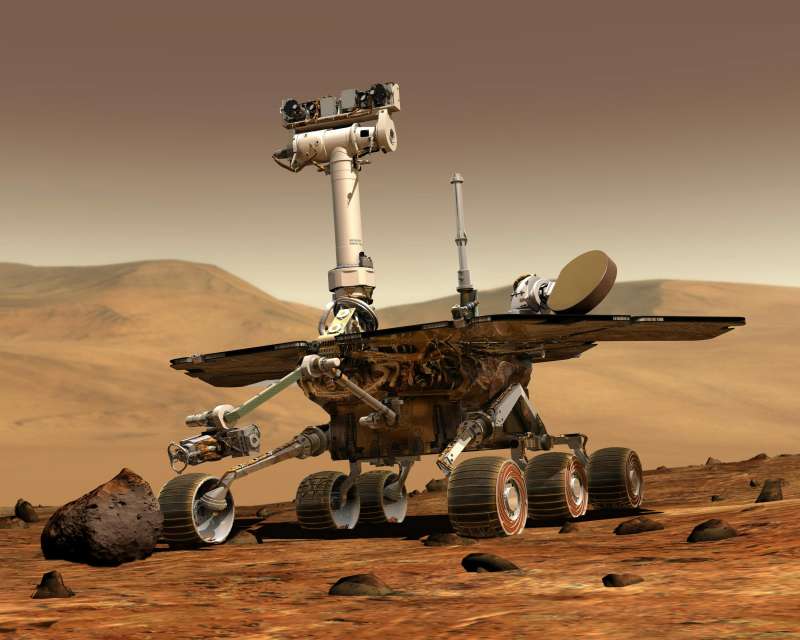Robotics in Space Exploration: Automating Missions and Experiments
Published on: May 26, 2025
Robotics and the Evolution of Space Exploration
Since the dawn of the space age, robotics has played a pivotal role in enabling humanity to explore the cosmos. The use of robotic systems in space missions has expanded the frontiers of scientific knowledge, allowing for the investigation of distant planets, moons, asteroids, and comets. Robotics has become essential for automating complex tasks, conducting experiments, and gathering data in environments that are too hazardous or inaccessible for human astronauts. The evolution of robotics in space exploration has been marked by significant technological advancements, leading to the development of sophisticated machines capable of performing a wide range of functions autonomously or with minimal human intervention.
Historical Milestones in Space Robotics
The history of robotics in space exploration dates back to the early 1960s with the launch of the Soviet Luna program, which included the first robotic spacecraft to reach the Moon. The Luna 9 lander, in 1966, became the first spacecraft to achieve a soft landing on the lunar surface and transmit photographic data back to Earth. This achievement marked the beginning of robotic exploration beyond our planet. In the following decades, robotic spacecraft such as the Voyager probes, launched by NASA in 1977, provided humanity with unprecedented views of the outer planets and their moons. These missions demonstrated the power of robotics to extend our reach into the solar system and gather valuable scientific data from previously unexplored regions.
Another significant milestone was the deployment of the Mars rovers. The Sojourner rover, part of NASA's Mars Pathfinder mission in 1997, was the first wheeled robot to traverse the surface of another planet. It paved the way for more advanced robotic explorers, such as Spirit and Opportunity, which landed on Mars in 2004. These twin rovers operated far beyond their expected lifespans, traveling kilometers across the Martian terrain and conducting extensive geological studies. Their success underscored the reliability and versatility of robotic systems in harsh extraterrestrial environments.
The Role of Mars Rovers in Scientific Discovery
Mars rovers have become iconic symbols of robotic exploration. These mobile laboratories are equipped with a suite of scientific instruments designed to analyze the Martian surface, atmosphere, and subsurface. The Curiosity rover, which landed on Mars in 2012, has been instrumental in investigating the planet's habitability and searching for signs of past microbial life. Curiosity's robotic arm, drill, and onboard laboratories allow it to collect and analyze rock and soil samples autonomously. The Perseverance rover, which arrived on Mars in 2021, represents the latest generation of robotic explorers. Its mission includes searching for biosignatures, testing new technologies for future human missions, and collecting samples for eventual return to Earth.
These rovers operate under challenging conditions, including extreme temperatures, dust storms, and communication delays. Their ability to function autonomously is critical, as signals from Earth can take up to 24 minutes to reach Mars. Advanced software enables them to navigate obstacles, identify scientific targets, and carry out experiments with minimal human supervision. The data collected by these robots has transformed our understanding of Mars, revealing evidence of ancient riverbeds, lakes, and organic molecules that suggest the planet may have once supported life.
Robotic Systems for Asteroid and Comet Exploration
Beyond planetary surfaces, robotic systems have been essential for exploring small bodies in the solar system, such as asteroids and comets. These missions provide insights into the building blocks of our solar system and the origins of water and organic compounds on Earth. The Japanese Hayabusa and Hayabusa2 missions exemplify the capabilities of robotic spacecraft in asteroid exploration. Hayabusa2 successfully collected samples from the asteroid Ryugu and returned them to Earth in 2020, offering valuable material for scientific analysis.
Similarly, NASA's OSIRIS-REx mission demonstrated the precision of robotic sample collection. The spacecraft arrived at the asteroid Bennu in 2018 and used a robotic arm to collect surface material. The samples are expected to return to Earth, providing scientists with pristine material from the early solar system. The European Space Agency's Rosetta mission, which deployed the Philae lander onto the surface of comet 67P/Churyumov-Gerasimenko, further showcased the complexity and potential of robotic exploration. These missions highlight the importance of robotics in conducting experiments and collecting samples from diverse celestial bodies.
Automation and Artificial Intelligence in Space Robotics
Automation and artificial intelligence (AI) are increasingly integral to space robotics. The vast distances and communication delays involved in space missions necessitate a high degree of autonomy. Robotic spacecraft are often required to make real-time decisions, adapt to unexpected situations, and carry out complex sequences of operations without direct human control. AI algorithms enable robots to process sensor data, recognize patterns, and optimize their actions for maximum scientific return.
For example, the Mars rovers use AI-based navigation systems to avoid hazards and select paths that maximize scientific opportunities. Machine learning techniques are also employed to analyze images and detect interesting geological features. In the context of orbital missions, autonomous spacecraft can perform rendezvous and docking maneuvers, manage power and thermal systems, and respond to emergencies. The integration of AI and automation enhances the efficiency and reliability of robotic missions, enabling the exploration of more challenging and remote environments.
Robotic Arms and Manipulators in Space Applications
Robotic arms and manipulators are key components of many space missions, providing the dexterity and precision needed to perform a variety of tasks. The Canadarm and Canadarm2, developed by the Canadian Space Agency, have been used on the Space Shuttle and the International Space Station (ISS) to deploy satellites, assemble structures, and assist astronauts during spacewalks. These robotic arms are capable of handling delicate equipment, conducting repairs, and supporting scientific experiments in microgravity.
On planetary missions, robotic arms are used to collect soil and rock samples, deploy scientific instruments, and manipulate experimental payloads. The Sample Analysis at Mars (SAM) instrument suite on the Curiosity rover, for instance, relies on a robotic arm to deliver samples to its onboard laboratories. The development of advanced robotic manipulators continues to expand the range of tasks that can be automated in space, reducing the need for direct human intervention and increasing mission flexibility.
Robotics in Lunar Exploration and Future Missions
Robotics is poised to play a central role in the renewed exploration of the Moon. NASA's Artemis program aims to return humans to the lunar surface, but robotic systems will precede and support these missions. Robotic landers, rovers, and construction machines are being developed to scout landing sites, prospect for resources, and build infrastructure. The VIPER rover, scheduled for launch in the coming years, will search for water ice at the lunar south pole, providing critical data for future human habitation.
International collaborations are also advancing lunar robotics. The European Space Agency and Roscosmos are working on the Luna 27 mission, which will deploy a robotic lander to study the lunar surface and search for volatiles. China has achieved significant milestones with its Chang'e program, including the first soft landing on the lunar far side and the return of lunar samples to Earth. These achievements underscore the growing capabilities of robotic systems in supporting complex lunar missions and laying the groundwork for sustained human presence.
Autonomous Spacecraft and Satellite Servicing
Autonomous robotic spacecraft are revolutionizing the maintenance and servicing of satellites in orbit. Traditionally, satellites have been designed for limited lifespans, with little possibility for repair or refueling once in space. Recent advances in robotics have enabled the development of servicing missions that can extend the operational life of satellites, reduce space debris, and lower the cost of space operations. The Mission Extension Vehicle (MEV), developed by Northrop Grumman, has successfully docked with aging satellites to provide propulsion and attitude control, allowing them to continue functioning beyond their original design life.
Robotic servicing missions involve complex maneuvers, including rendezvous, docking, and the use of robotic arms to perform repairs or replace components. These capabilities are also being considered for the assembly of large structures in orbit, such as space telescopes and solar power stations. The ability to autonomously service and upgrade space assets represents a significant leap forward in the sustainability and scalability of space activities.
Robotics in Space Science and Experimentation
Robotic systems are indispensable tools for conducting scientific experiments in space. Onboard laboratories, such as those on the Mars rovers and the ISS, enable the analysis of samples and the study of physical and biological processes in microgravity. Robotic platforms can carry a wide range of sensors and instruments, from spectrometers and cameras to seismometers and weather stations. This versatility allows scientists to investigate fundamental questions about the origins of the solar system, the potential for life beyond Earth, and the effects of space environments on materials and organisms.
Robotic telescopes and observatories, such as the Hubble Space Telescope and the upcoming James Webb Space Telescope, have transformed our understanding of the universe. These instruments operate autonomously, capturing high-resolution images and spectra of distant galaxies, stars, and exoplanets. The use of robotics in space science has enabled long-duration observations, rapid response to transient events, and the collection of data that would be impossible to obtain from the ground.
Challenges and Future Directions in Space Robotics
Despite remarkable progress, space robotics faces significant challenges. The harsh conditions of space, including radiation, vacuum, and extreme temperatures, can degrade electronic components and mechanical systems. The need for autonomy and reliability requires rigorous testing and validation of robotic software and hardware. Communication delays and bandwidth limitations constrain the ability to control robots in real time, necessitating advanced onboard decision-making capabilities.
Looking ahead, the future of space robotics will be shaped by ongoing advancements in AI, machine learning, and materials science. Swarm robotics, in which multiple robots collaborate to achieve complex objectives, is an area of active research. Such systems could be used for large-scale construction, resource extraction, or planetary exploration. The miniaturization of robotic platforms and the development of new propulsion technologies will further expand the range of missions that can be undertaken.
Robotics will also play a crucial role in enabling human exploration of deep space. Autonomous systems can prepare landing sites, build habitats, and maintain life support infrastructure before the arrival of astronauts. In the long term, robotic missions to the outer planets, their moons, and interstellar space will continue to push the boundaries of human knowledge and capability.
The Impact of Robotics on Expanding Human Presence in Space
The integration of robotics into space exploration has fundamentally transformed the way we approach the cosmos. Robots have become our eyes, hands, and proxies in environments that are too distant or dangerous for humans. They enable the automation of missions and experiments, increasing the efficiency and safety of space operations. The ability to conduct remote exploration, gather samples, and perform scientific analysis has accelerated the pace of discovery and opened new avenues for research.
As space agencies and private companies continue to invest in robotic technologies, the potential for expanding human presence in space grows. Robotic systems will be essential for building the infrastructure needed to support long-duration missions, from lunar bases to Mars outposts and beyond. The collaboration between humans and robots will define the next era of space exploration, leveraging the strengths of both to achieve unprecedented goals.










